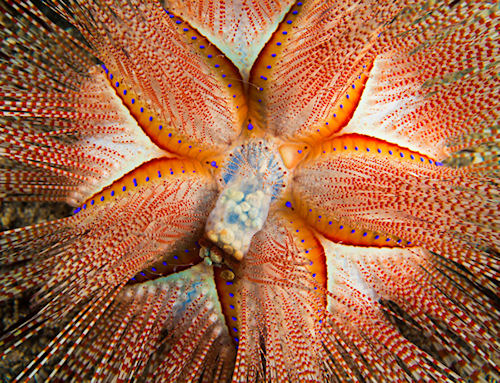A Vibrant, Beautiful Death for a Deadly Sea Creature
Wednesday, June 13th, 2012While it sounds like the last half of a Harry Potter book title, the Fire Urchin isn’t quite as fun.
Fire Urchins, which are found off the coast of Maui, Hawaii, get their name not from their typically blazing colorations but from the fantastically painful sting that comes from messing with one of these things. Not only are its red and white hair-like spikes venomous but at the base of each one of those tiny harpoons are small pincers containing even more poison just waiting to latch on to whatever prey wanders too close.
What’s fascinating about the above photo (looking directly down onto the urchin from above) and makes it really weird is that nature photographer David Fleetham caught, for the first time, one of these urchins in its final moments.
Looking at the center of the photo, you’ll see what looks like a bag of balls from a Chuck E. Cheese ball-pit…only not it’s quite as fun…
That sack is actually its entire insides being expelled through its mouth.
SO cute…right?
[New Scientist]

